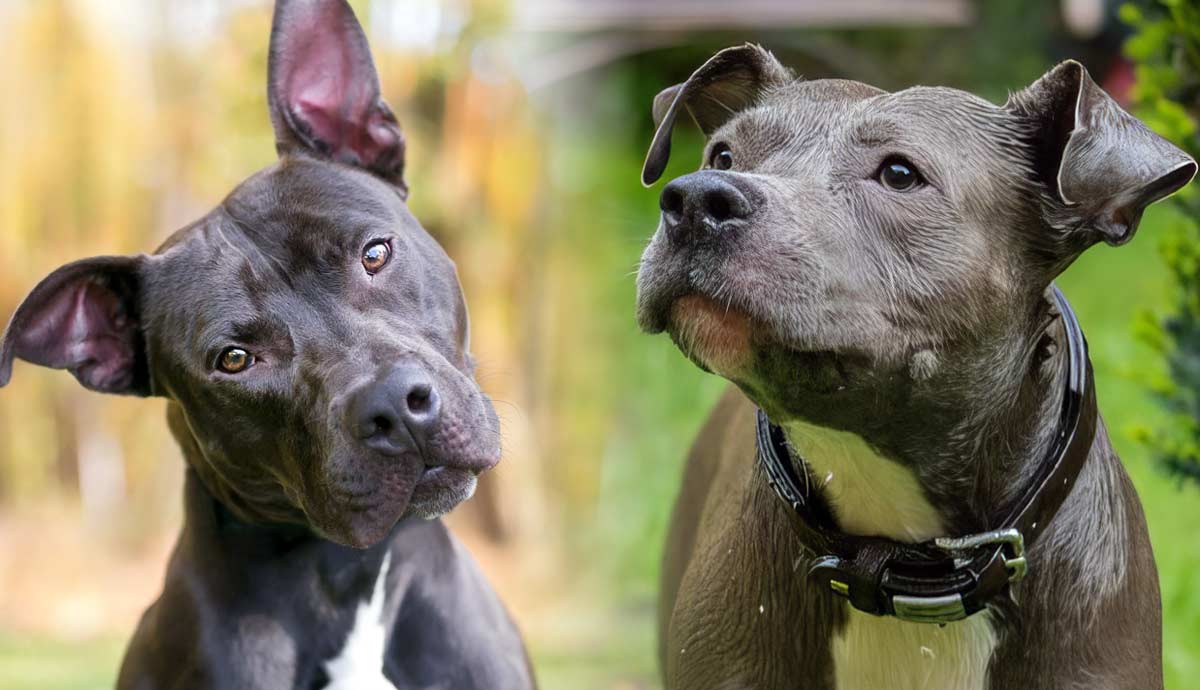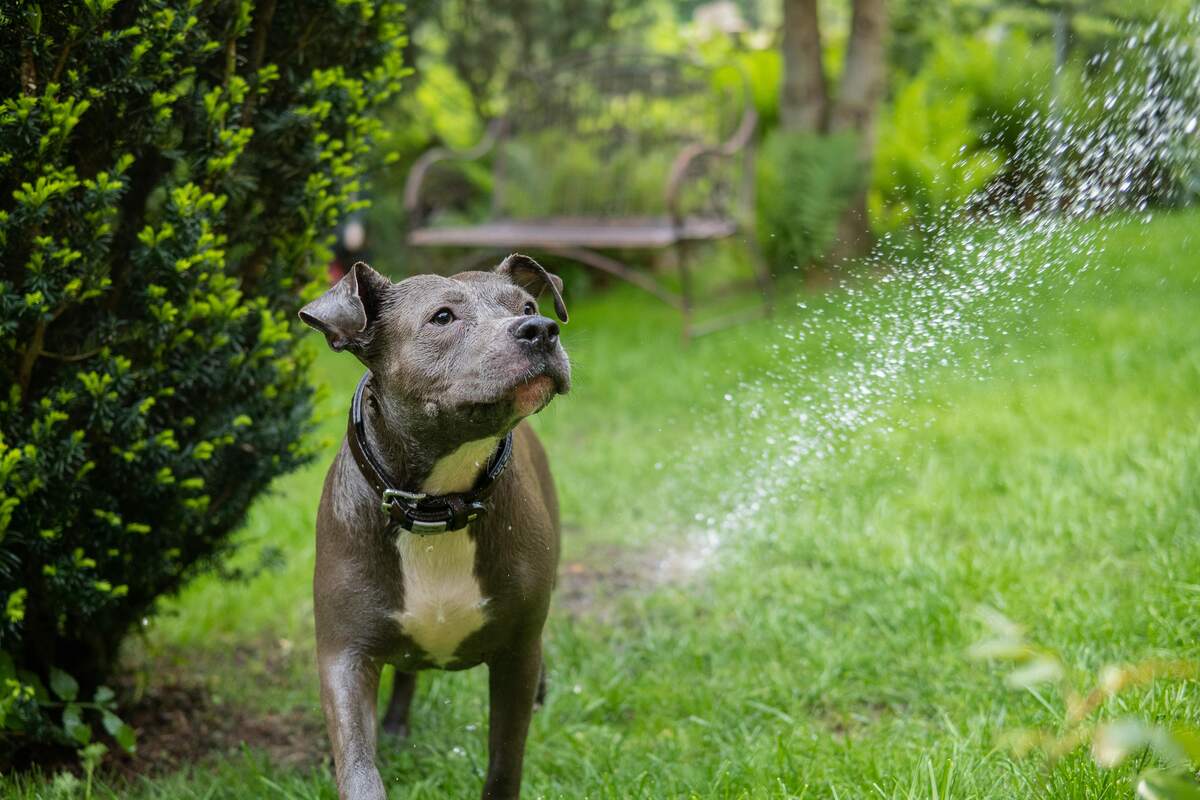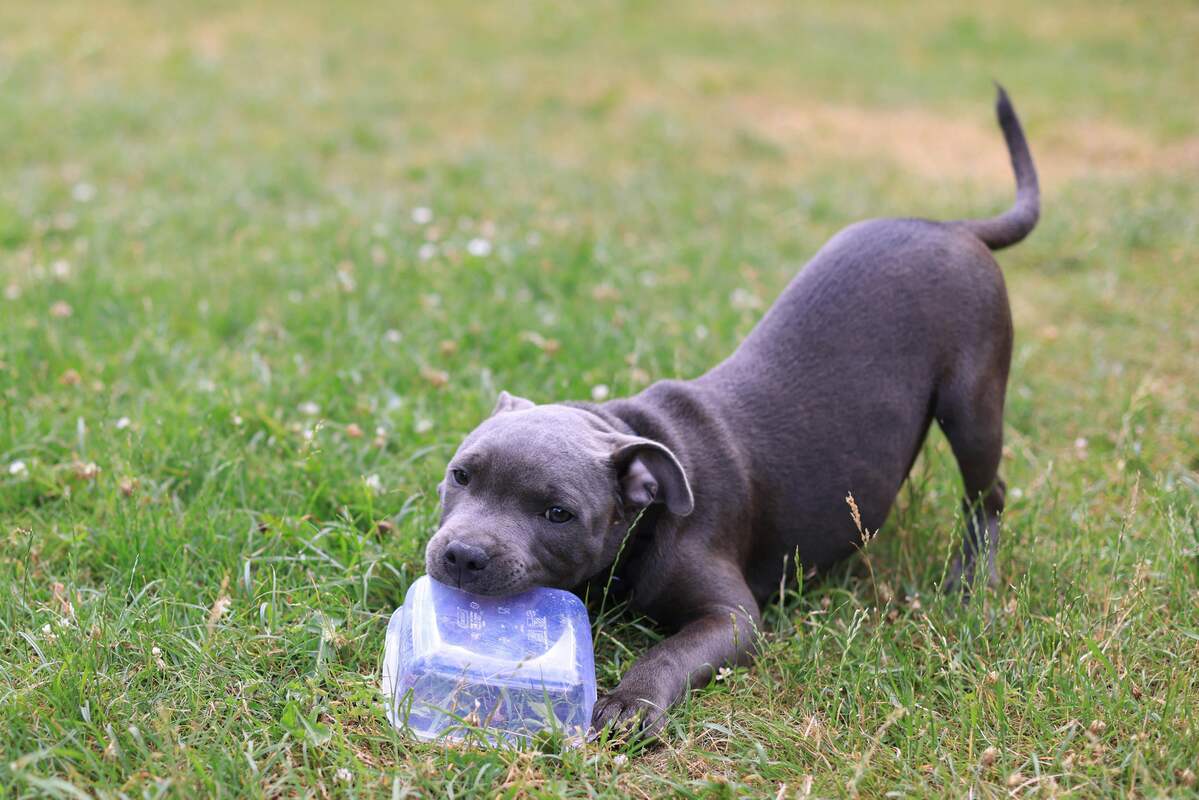
Staffordshire Bull Terriers and American Pit Bull Terriers are often confused with each other, as both are considered bully breeds. Often, they’re both referred to as “pit bulls,” though this umbrella term is quite stigmatizing and often used against the breeds to label them as violent.
They share many commonalities, including a shared ancestry. In this article, we’ll talk all about these two breeds, from their kennel club recognitions to their temperament and more.
Appearance

The Staffordshire Bull Terrier is recognized by the American Kennel Club (AKC). The Staffie breed standard dictates that they stand 14-16 inches tall at the shoulder and weigh between 24 and 38 pounds.
American Pit Bull Terriers aren’t recognized by the AKC, but they are by the United Kennel Club (UKC). They stand 17-21 inches tall and weigh 30-60 pounds.
Staffies are, therefore, much smaller dogs. They also have a wide range of coat colors, including black, blue, brindle, fawn, red, and white. They may have white or brindle markings. Pitties may have any coat color according to their breed standard.
They both have muscular builds, though Pitties tend to have longer legs.
Grooming Needs

These dogs don’t have high grooming needs, as their coats are quite short! You can brush them to keep their coats healthy and reduce the amount of shed fur around the house, but a missed session won’t hurt your pup.
However, their short coats do make them more prone to sunburn, so you may want to apply some doggy sunscreen (yes, that exists!) before bringing them out in the sun. This is especially true of pups with light-colored fur, who will burn more easily.
Other essentials are nail trims at least once a month, baths as needed, and daily toothbrushing. Remember to always use dog toothpaste, as human toothpaste isn’t meant to be swallowed, and it also contains ingredients that are toxic to dogs.
If your dog won’t allow you to brush their teeth, consider other alternatives such as dental treats or sprays. There are also drops that you can add to their water to help fight plaque and tartar buildup.
Temperament

These breeds have very similar temperaments, and they’re also commonly misunderstood! In truth, a well-bred pup is super friendly with people and typically quite open to strangers as well. While they tend to be good with children, adult supervision is required with any dog breed.
Bully breeds can be clingy and often dislike being alone for long periods. Separation anxiety is common, and it’s best for both Staffies and Pitties to be adopted into families where at least one person is home most of the day.
Since these are terriers, you’re likely to notice a high prey drive. Keep your pup on a leash or in a securely fenced yard to prevent them from chasing after small animals. Depending on genetics and upbringing, both breeds may also see cats as prey. Those raised with cats have a better chance of getting along with them later in life.
They’re often stand-offish when meeting new dogs, but a reputable breeder will prioritize breeding for friendliness and providing proper socialization while the puppies are young.
Trainability

Staffies and American Pit Bull Terriers are eager to please and want to make their people happy! They’re also smart dogs who learn quickly, and when properly bred, can be a breeze to train.
However, many of them will struggle with dog aggression, reactivity, or anxiety. These issues can be challenging to address, especially for inexperienced dog owners who have never encountered them before.
Remember to stick with positive reinforcement and other force-free training methods. Harsh training methods or tools, including prong or shock collars, can provide a seemingly quick fix that masks the problem. Often, the dog shuts down completely, which to some people appears as if they’re behaving, only to find later that the problems had worsened because the root cause had never been addressed.
Lastly, remember that you should never attempt to dominate your dog or become the alpha of the pack. These concepts originate from the outdated dominance theory, which was founded on research involving captive wolves placed in stressful situations with insufficient resources to thrive. It has no bearing on how domesticated dogs, or even wild wolves, behave.
Some people think that strong dog breeds require a firmer hand than others, but it’s actually even more important that we train them right, without using inhumane training tactics that promote fear and aggression.
Exercise Needs

Both breeds are highly energetic and require regular exercise to remain happy and healthy. Don’t forget mental enrichment either, as these are smart dogs who can get bored easily.
Stimulate their hunting instincts with flirt poles, scent games like hide-and-seek, or games of fetch in the backyard. Of course, a daily walk is also ideal, and once their joints are fully developed at around 18 months old, you can begin going on runs or hikes.
When they’re not exercising, these dogs tend to be relatively calm. They can develop behavioral problems due to boredom or separation anxiety, including destructive chewing, digging, or excessive barking.
Are Staffies or Pitbulls Illegal to Own?

If your city or apartment bans any kinds of “dangerous dog breeds,” American Staffordshire Terriers and American Pit Bull Terriers are almost definitely on that list. They might also list “pit bulls” as an umbrella term meant to catch all bully breeds, or any breed that someone might mistake for one.
Unfortunately, this means that housing options are often limited for dog parents who own these breeds. It’s best to conduct thorough research so that you don’t end up having to rehome your dog or face eviction from your home.




